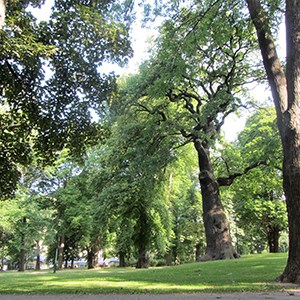Facts:
i-Tree Sverige – en kartläggning av träds samhällsnytta (in Swedish)
i-Tree Sverige - Svenska Trädföreningen
Contact at SLU
Johanna Deak-Sjöman
johanna.deak.sjoman@slu.se , tel 070-696 95 05, 040-41 51 27

i-Tree Sweden is a nationwide project funded by 26 municipalities and organisations such as housing companies, arboricultural contractors, and cemetery management organisations. Based on inventories conducted in nine municipalities, from the far northern city of Luleå to Malmö in the south, the i-Tree ECO v6 tool from the United States Department of Agriculture (USDA) was used to calculate the value of the ecosystem services provided by Swedish urban forests throughout the country.
This evaluation includes urban trees, from a temperate continental climate in the south to a subarctic climate in the north. Field measurements have resulted in an inventory of 16,223 trees that represent an estimated total urban tree population of 12,530,555 in the i-Tree Sweden project. Ecosystem services assessed include reduction of air pollution and stormwater runoff, carbon sequestration, and carbon storage.
A summary of the results indicates that most tree populations in cities are dominated by Scots pine, Norway spruce, silver birch, and rowan, and that percentage of leaf area influences the capacity in the ecosystem. This means that tree species with a limited number of individuals may still provide considerable ecosystem services due to the expansive crowns associated with large individual trees. One of several research areas under the project is how current structural values (i.e. the distribution of species and size variation of trees within the population) can be analyzed in the perspectives of species diversity and the detrimental effects of pests and disease
Furthermore, the project is collaborating with the Norwegian Institute for Nature Research, Oslo, and Natural Resources Institute Finland, Helsinki. The joint research will focus on i-Tree Eco as a tool in urban green space management. Questions of interest include the potential of i-Tree Eco to highlight the value of trees and future management, the role of numeric values, and how measurements of e.g. urban tree canopy cover may influence policymaking.
i-Tree Sverige – en kartläggning av träds samhällsnytta (in Swedish)
i-Tree Sverige - Svenska Trädföreningen
Johanna Deak-Sjöman
johanna.deak.sjoman@slu.se , tel 070-696 95 05, 040-41 51 27